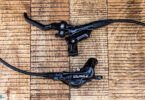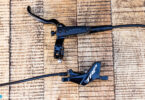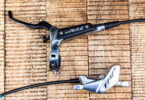A lot has happened with dropper seat posts this year. There are new players, new technologies and longer drops than ever before. We tell you what really matters when choosing a new dropper post, and will help you find which one is best for you.

Dropper posts 2.0 – more travel, cheaper and even wireless
In our 2017 dropper seat post-test, we lamented“Why are there no wireless posts in this test? Wireless electronic dropper posts are the future, but currently, they do not offer the same performance as traditional designs.” The future is now. RockShox have released their electronic Reverb AXS dropper post, wireless is here and it works flawlessly. But at € 800, is it worth it? New players have also come onto the scene with outstanding non-wireless options. PNW, OneUp and Yep all have posts that bring something unique to the table. Dropper post-travel has increased too. Long’n’ slack geometry has given us lower standover heights while dropper posts have grown more compact, allowing 170 mm of drop to be squeezed into the same space as an older 150 mm post. There are even posts that drop up to 258 mm! If you’re looking for a new dropper or want more travel, it’s time to help guide you through the latest offerings.
In this buyers guide to dropper posts, we will explain which features contribute to a good dropper post, before we answer the question of which dropper post is the best on the market. If you have any more questions about dropper seat posts or are in the market for a new remote, you will find all the answers in the FAQ at the end of this feature.
What makes a good dropper post?
A good dropper post should be a fit and forget part. It should be simple to install, require minimal maintenance and be totally reliable. The best posts will have an ergonomic remote that harmonises with the existing controls on the bar and is simple to install. The remote lever should have a smooth and light action, and be sensitive enough to stop the post quickly at any point in its travel (If you’re looking for a new remote you shouldn’t miss our recent dropper post remote group test.). The best dropper posts will have a low profile design, allowing shorter-legged riders to get more dropper travel out of the limited space between the seat clamp and saddle. Finally, the dropper post should have a saddle clamp that doesn’t require the dexterity of a brain surgeon and the arms of an octopus to install a saddle.

What kinds of dropper post are there?
Nearly all modern dropper posts are now ‘internal’, meaning that the cable connects to the post at its base where it is safe and hidden away inside the seat tube. While these posts take a little longer to install and set up, once they are in, they are largely fit and forget. Nearly all high-end bikes now have a port for an internally routed post, and the choice of externally routed (where the cable attaches to the dropper seat post outside the frame of the bike) posts are becoming ever fewer. All posts use a remote connected to the other end of the cable which is fitted to the bar. The remote operates the post in one of three ways. Most commonly, a standard gear cable is used to actuate the post. The main advantage is that cables are cheap and easy to obtain when they eventually need to be replaced. However, just like gear cables, they don’t like tight turns inside the frame. Uniquely, the popular Rockshox Reverb dropper is hydraulically actuated, using a hose filled with mineral oil to activate the post. The benefit of this system is that it will not corrode and can operate through tighter turns inside the frame. However, just like disc brake, the hose will need to be bled periodically as air can get into the system. Wireless dropper posts represent an exciting new category on the market. Magura has offered the Vyron for several years but the delay in operation did not impress us on the trail. The new RockShox Reverb AXS finally brings instantaneous activation which puts wireless on a whole new level.
Anatomy of a dropper post
Seemingly a simple component, dropper posts have many potential features that can improve the user experience.
Adjustable return speed
Some of the best posts allow you to adjust the return speed of the post, from slow and lazy to family-jewels-threateningly fast, to suit your riding style! Some posts feature an adjustment on the remote, some can be adjusted by changing the air pressure in the post and some are one-speed only.
Infinite adjustment
Some posts have predetermined stops in the top, middle, and bottom, though most models offer infinite adjustment. Infinite adjustment allows you to stop the post at any point in its travel to fine-tune the ride height.
Remote lever
All the posts in the test feature a bar-mounted remote, allowing you to drop the post without taking your hands off the grips. With the universal uptake of 1x drivetrains, the best remotes use a shifter style that provides functional and ergonomic operation.
Stack height
Stack height is the distance the post extends above the frame in its lowest position. Differences in seat clamp head design mean some posts are taller (or shorter) than others. The best posts now have very low stack heights, allowing you to fit more travel into a shorter space.
Seatpost diameter
Most dropper seat posts come in either a 30.9, 31.6 and occasionally 34.9 mm seat-post diameter, allowing them to be fitted to most current frames on the market. Shims can be used to increase the seat-post diameter of a dropper post to fit into a larger diameter frame size, but you cannot fit a larger dropper post into a narrower diameter frame.
Travel
Dropper seat posts are now available in a wide range of drops, from 100 mm right through to a whopping 258 mm. The goal for most riders is to fit as much dropper post travel as possible into their bike. This is limited by the seat tube length, dropper design and the length of the rider’s legs.
Cartridge
Most droppers use an internal hydraulic cartridge, consisting of an air spring to extend the post when actuated and a damper to control the movement of the post. Some are user-serviceable while others have to be returned to the manufacturer for service.
Weight
Dropper posts are getting lighter and lighter, but there are still significant differences between brands. A good post will be lightweight and reliable.
Seat clamp head
Not all seat clamp heads are created equal. Fitting a saddle to some of the posts on the test requires the dexterity of a brain surgeon and at least twelve fingers. A good seat clamp will allow installation with minimal stress and allows easy independent adjustment of seat angle and fore/aft position.
You’ll find further information on dropper posts in our FAQ at the end of this site.
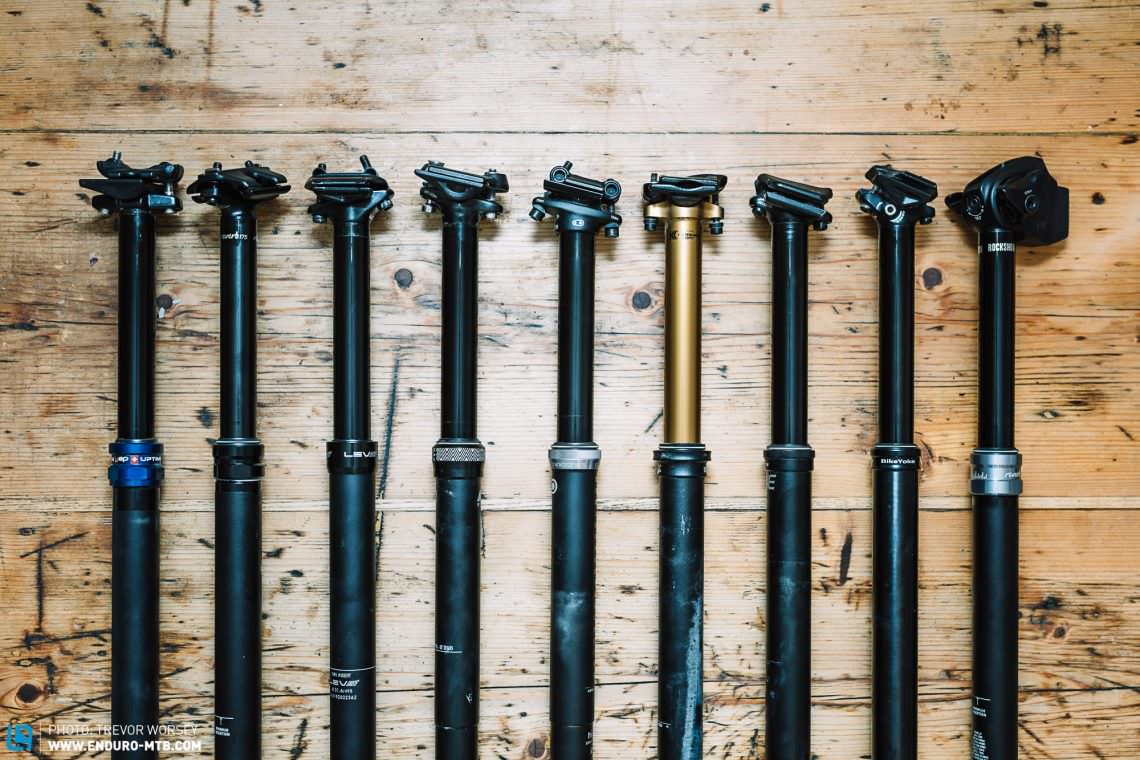
Which dropper posts did we test?
There is a wide range of dropper posts on the market that caters for all budgets. As much as we would like to, with so many options and our long testing period, it is not possible to test all the models on the market. In general, the more affordable the dropper post, the shorter the travel will be. We think for most riders, 150 mm should be considered the minimum drop for trail riding, though with modern frame geometry providing more standover clearance, 170 mm will be an option for many. For this test we have excluded all posts that have less than 150 mm travel and have instead focussed on dropper posts that are available in a wide range of sizes, to suit a greater range of riders. There are now also lightweight, short-drop options available for XC riders. While interesting for specific applications, we have decided not to make them part of this test.
During testing, one property shared by all the posts was their rugged reliability. Even after thousands of hours of cumulative testing, we encountered very few issues.
| Post | Price1 | Total length2 | Max insertion3 | Ride height4 | Stack height5 | Travel [mm] | Weight (incl. remote) | Mechanism |
|---|---|---|---|---|---|---|---|---|
| BikeYoke REVIVE (Click for review) | € 419 (with Triggy) | 520 mm | 290 mm | 206 mm | 45 mm | 125 – 160 – 185 | 583 g | Cable |
| FOX Transfer Factory (Click for review) | € 429/€ 69 | 530 mm | 300 mm | 205 mm | 60 mm | 100 – 125 – 150 – 175 | 583 g | Cable |
| KS LEV Si (Click for review) | € 260/€ 39 | 500 mm | 275 mm | 200 mm | 50 mm | 65 – 75 – 100 – 125 – 150 – 175 | 589 g | Cable |
| OneUp V2 (Click for review) | € 209/€ 45.50 | 550 mm | 300 mm | 255 mm | 40 mm | 120 – 150 – 180 – 210 | 594 g | Cable |
| PNW Bachelor (Click for review) | € 255/€ 74 | 500 mm | 275 mm | 225 mm | 57 mm | 125 – 150 – 170 – 200 | 590 g | Cable |
| RockShox Reverb AXS (Click for review) | € 800 | 470 mm | 245 mm | 190 mm | 75 mm | 100 – 125 – 150 – 170 | 650 g | Wireless |
| RockShox Reverb C1 (Click for review) | € 445 | 510 mm | 275 mm | 205 mm | 63 mm | 100 – 125 – 150 – 175 – 200 | 585 g | Hydraulic |
| Yep Uptimizer HC 2.0 (Click for review) | € 380 | 535 mm | 290 mm | 205 mm | 52 mm | 80 – 100 – 125 – 155 – 185 | 573 g | Cable |
If you’re planning on upgrading your dropper post to one with more travel, here’s our guide to calculating if it will fit your frame.
You didn’t find the dropper post you’re interested in? Here are all the seat posts that we’ve previously tested over the last few years which haven’t found their way into our most recent comparison test:
e*thirteen TRS+ review | Brand-X Ascend review | 9Point8 Fall Line review | Crankbrothers Highline review | Easton Haven review | PRO Koryak ASP review | RockShox Reverb Stealth review | Magura Vyron review
How we test dropper posts
Dropper posts are perhaps the most difficult component on a bike to test. Unlike a bike, it’s difficult to form initial impressions or conclusions. That’s because a dropper seat post requires long-term testing because it needs to perform well day in day out, and be consistently reliable over a long period. A dropper post needs to stand out by not standing out. While we are bound to model years, we have endeavoured to have test droppers fitted to our test bikes for as long as possible. Every post in this test has had at least 5-months trail time, some considerably more. The posts were abused: bikes were ridden through all conditions, hung from saddles, dropper posts were washed, adjusted and saddles swapped. Where possible, we serviced the posts ourselves to see how easy it was. We tried to tally up the ride-hours that went into producing this test but we lost count. Certainly, more than 1,000 hours filled with ups and downs (pun intended). Interestingly, despite more test hours than our 2017 group test, we suffered far less mechanical issues or problems, demonstrating that dropper posts are evolving to become more reliable.
The Best Dropper Post – RockShox Reverb AXS
Wireless integration will be the future. If you’re looking for the smoothest operation, the lightest activation and the easiest post to install, the RockShox Reverb AXS is it. Push-button control gives instantaneous activation that can be stopped anywhere in the travel faster than any other post in this test. But it’s not a perfect product. The significant cost aside, wireless technology does come with some small, but significant, drawbacks. The tall stack height will reduce travel options for shorter-legged testers and the need to charge a battery is a requirement unique to this post. However, the huge benefits of the RockShox AXS Reverb post cannot be ignored, especially when combined with an AXS drivetrain. While we’re not saying that you need to spend € 800 to get a good dropper post, RockShox has finally brought us into the wireless age with a post that performs impeccably. The RockShox Reverb AXS is the Best in Test, the future is now.
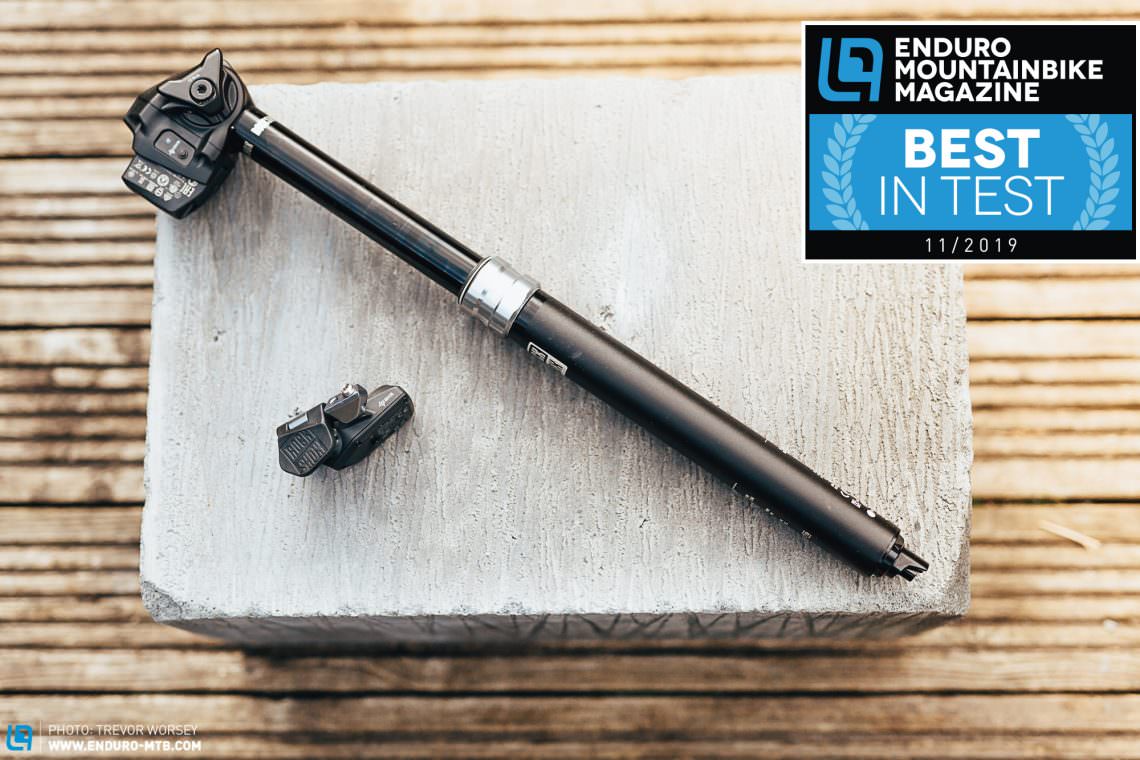
In terms of performance, the new RockShox Reverb AXS post is next level. Yes, it’s expensive. Yes, it does increase the stack height of the standard RockShox Reverb C1. But it also brings the lightest action, the most accurate control and next-level installation and technology. It’s not perfect, but we are confident that wireless will become the new standard for dropper posts in the future. For that reason, this dropper takes Best In Test.
Tops
- next level performance
- wireless installation
Flops
- tall stack height
- requires charging
Click here for the full review on the RockShox Reverb AXS dropper post
The Best Budget Dropper Post – OneUp V2
Of all the great options, there is one dropper post that ticks every box for us. For many riders, the best post is one that can give each rider the most amount of travel in the most compact form. Although the unique actuation design requires an additional adaptor for some frames, for most bikes the OneUp V2 dropper post does everything well, It looks great, has the lowest stack height and is the most compact dropper in the test. That fact that it is also affordable features adjustable travel and proved 100% reliable in our test is enough to take our Best Value Tip.
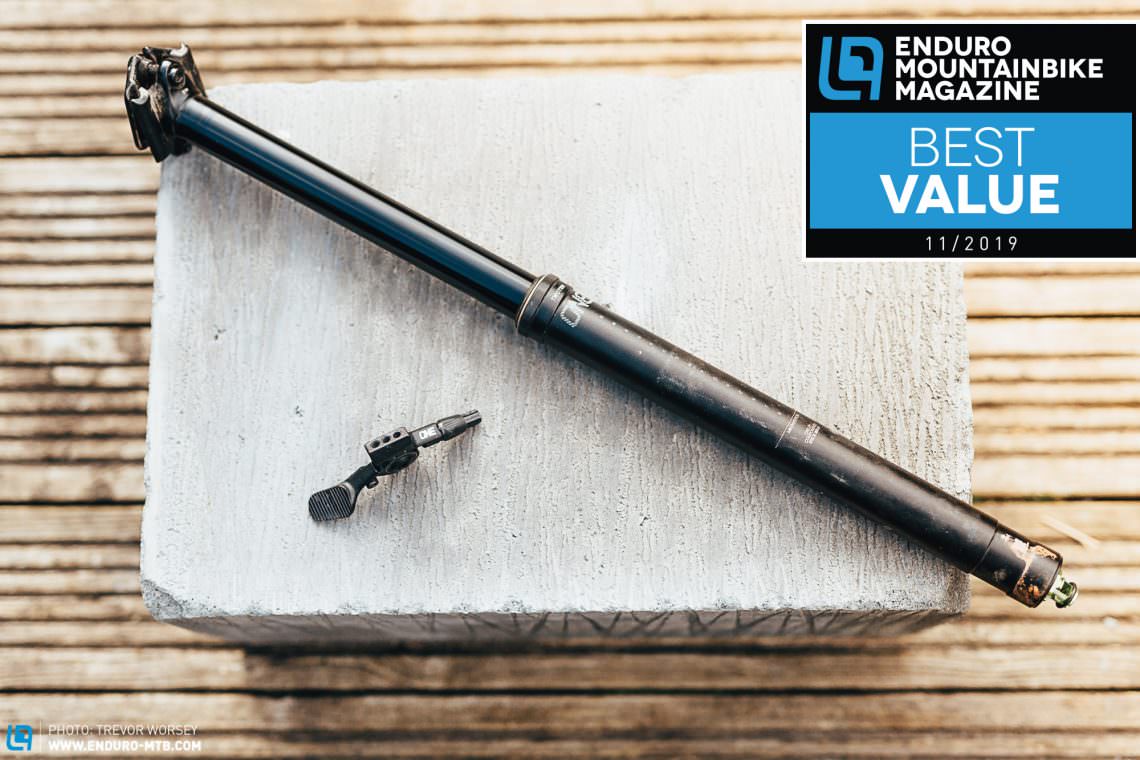
With the OneUp Dropper Post V2’s drop rail clamp system and low stack, no other post can get your saddle lower. We love that the travel can be tuned by up to 20 mm and the well designed too remote. The latter would be a worthy upgrade to any cable actuated post. The OneUp Dropper Post V2 is an impressive post indeed and will give you the most drop without breaking the bank, meaning it takes our Best Value TIP.
Tops
- everything you need from a post
- shortest stack height on the market
Flops
- cable outer activation not compatible with all bikes
- slight lateral play
Click here for the full review on the OneUp Dropper Post V2 dropper post
The competition
BikeYoke REVIVE
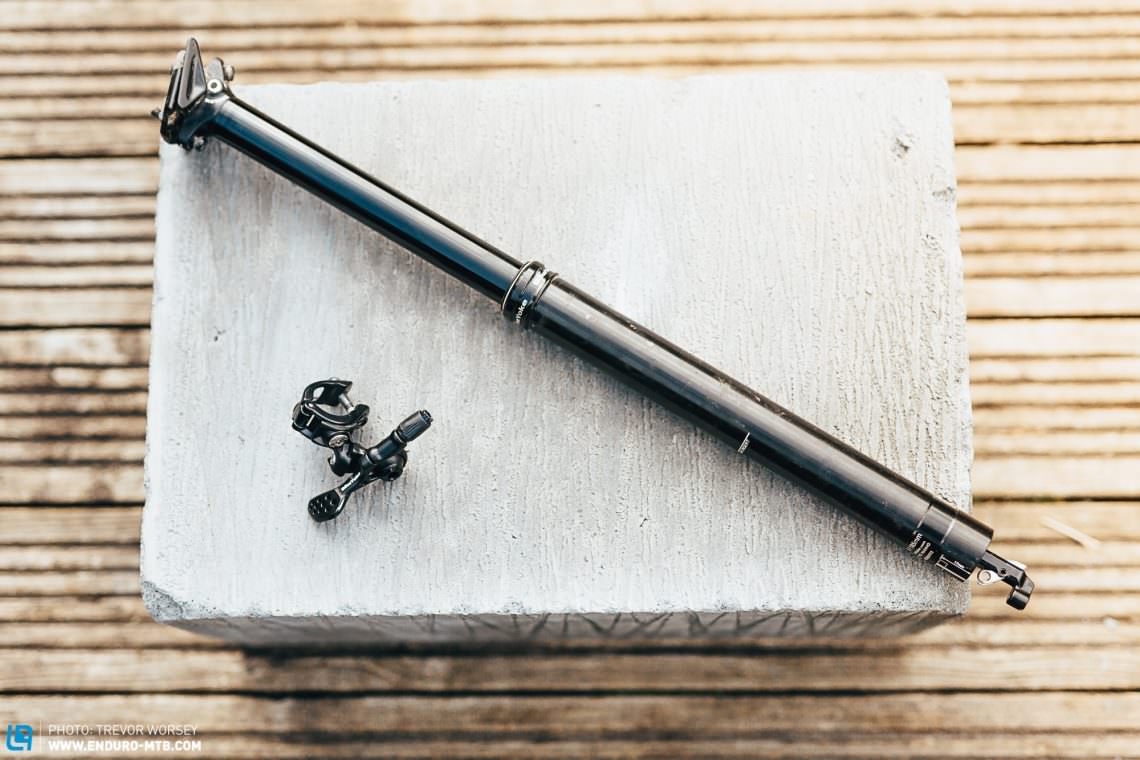
The BikeYoke REVIVE 185 is beautifully made and comes with a host of clever features. With a low stack height, it also features one of the smoothest actions in this test. If you appreciate intelligent engineering and don’t mind the occasional need to ‘revive’ your post, the BikeYoke REVIVE 185 is a class act.
Tops
- beautifully made
- light action and damped stroke
- great remote
Flops
- needs ‘reviving’ more than IFP posts
- expensive
Click here for the full review on the BikeYoke REVIVE 185 dropper post
FOX Transfer Factory

The FOX Transfer is the very definition of a fit-and-forget post with no reliability issues on our test posts. While the FOX Transfer was our 2017 test winner and has a smooth and light action, the poor quality remote and tall stack can no longer compete with the best designs on the market.
Tops
- super smooth
- reliable
- audible top out
Flops
- low-quality remote
- fiddly seat clamp bolts
Click here for the full review on the FOX Transfer Factory dropper post
KS LEV Si
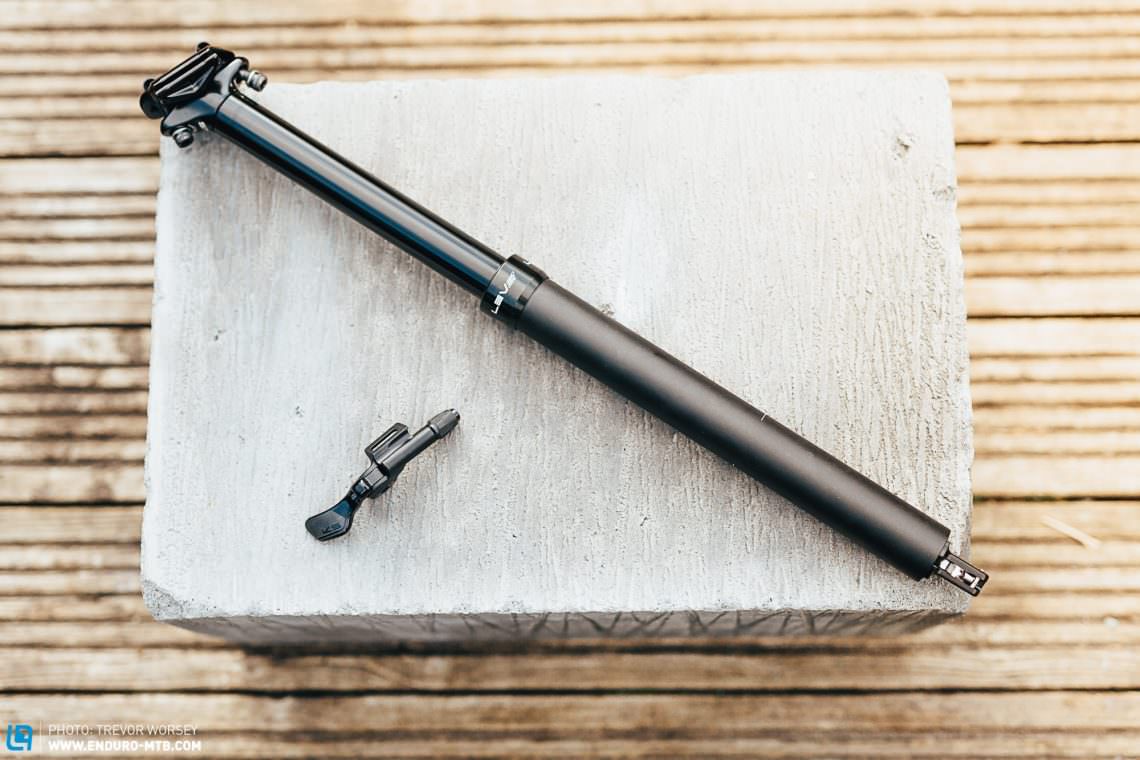
The KS LEV Si has a great price, great performance, low stack height and low insertion depth. It would make a great upgrade for someone looking to get their first dropper post, or upgrading a shorter post. Only the basic features let it down.
Tops
- fit-and-forget post
- low stack height and insertion depth
Flops
- needs the upgraded remote
- functional but not elegant
Click here for the full review on the KS LEV Si dropper post
PNW Bachelor
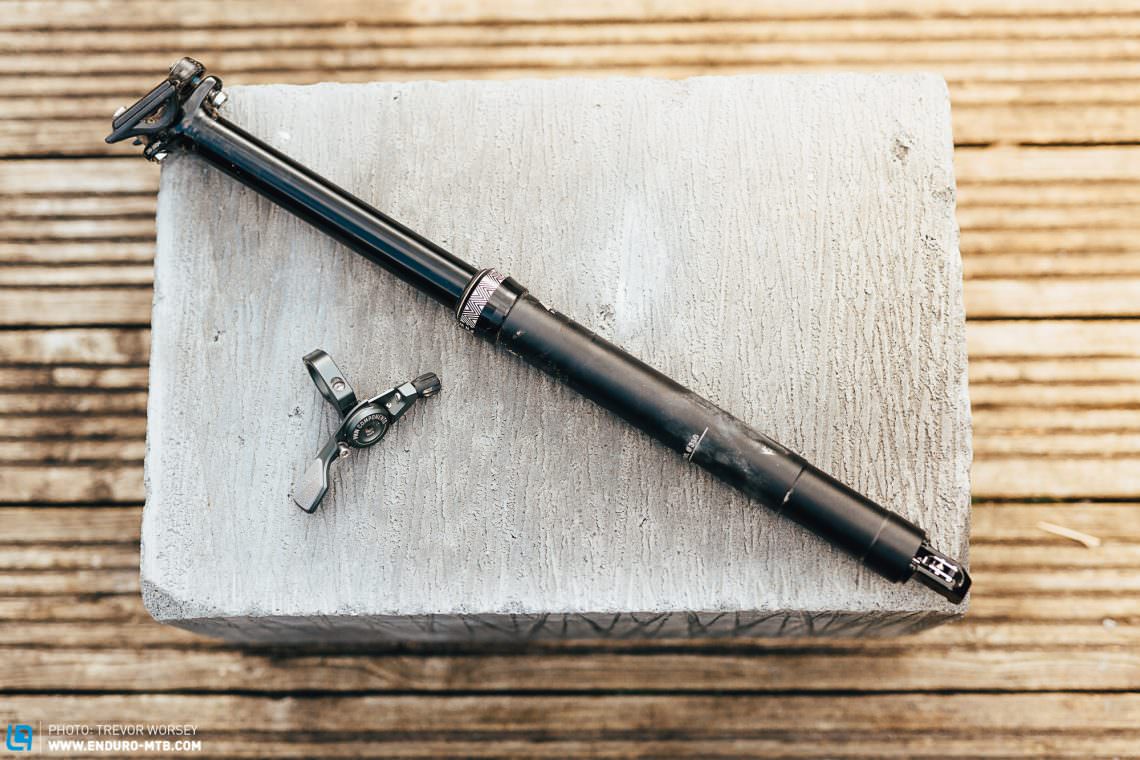
The PNW Bachelor is an outstanding post. Reliable, good looking and offering perfect functionality. Combined with the Loam Lever it is a class leading package at a great price. If an ultra-low stack height is not your main concern, then this is the post we would buy.
Tops
- loam Lever best in test
- faultless performance
Flops
- stack height not the lowest
- no angle marks on saddle clamp
Click here for the full review on the PNW Bachelor dropper post
RockShox Reverb C1

The new C1 update brings the RockShox Reverb back to the top of the pile. With new, smoother operation and a Vent Valve to refresh the post, the new RockShox Reverb C1 is outstanding. If you have tight cable routing on your frame, the flexible hydraulic hose of the Reverb is king.
Tops
- friction free activation
- flexible hose for difficult routing
- new Vent Valve
Flops
- 1X remote has long throw
- bleeding is more complex than cable change
Click here for the full review on the RockShox Reverb C1 dropper post
Yep Uptimizer HC 2.0
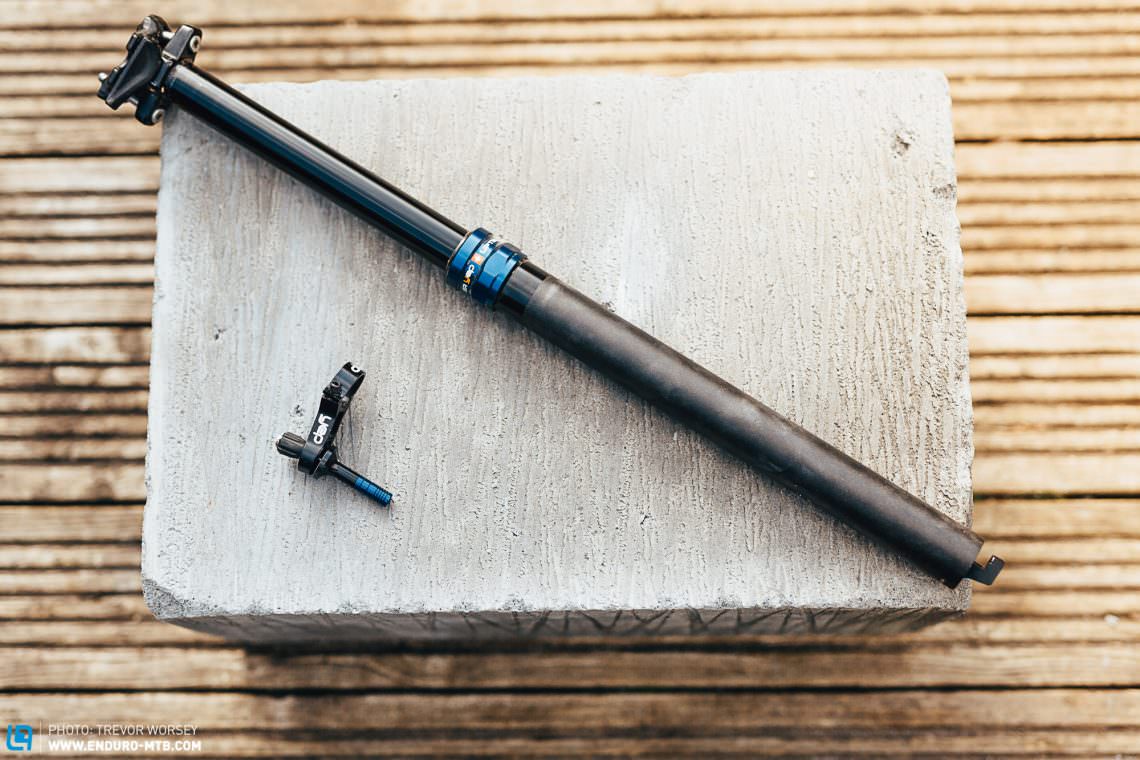
The Yep Uptimizer is a high-quality post and the only post that allows you to add a bit of colour to your bike. The joystick remote polarised our testers, but if you have cluttered bar, the remote is more versatile than a trigger shifter.
Tops
- high quality build
- different colour options
Flops
- joystick not as positive as a shifter remote
- expensive
Click here for the full review on the Yep Uptimizer dropper post
Conclusion
Showing just how far the dropper post market has evolved, even after many months of testing we had no major mechanical issues. Dropper posts are becoming increasingly reliable and there weren’t any bad posts in this test. However, there were some definite highlights. The Yep Uptimizer is a beautifully engineered post and the unique joystick remote is great for those still running a shifter or eMTB power selector on the left side of their bars. The FOX Transfer is still a very reliable post but we would choose to upgrade the cheap-feeling remote with either a PNW Loam Lever or Wolf Tooth ReMote for smoother operation (here you’ll find all common aftermarket levers). The new RockShox Reverb C1 is a great step forward for the iconic post, boasting a shorter overall length, smoother operation and a new Vent Valve to “refresh” the post if necessary. The Reverb still deserves its iconic reputation and is the best choice for those with tight internal routing. The PNW Bachelor is also outstanding, offering rock-solid operation without any play, and comes with the excellent Loam Lever remote which we would recommend as an upgrade to any post with a mechanical mechanism.
Dropper Post FAQ
There are still some questions left? In the following FAQ, we have answered all the important questions about dropper posts.
Are dropper posts worth it?
These days it’s almost impossible to find a bike without a dropper post, even at the most affordable end of the market. The obvious question is, are dropper posts worth it? The answer is a resounding yes! They might be more expensive and add a bit of weight, but a dropper post lets you drop your saddle out of the way for more control on technical terrain or steep descents, before returning it to the optimum pedalling height, all without taking your hands off the handlebar. This simple act makes your bike safer and infinitely more fun. If you don’t have a dropper seat post on your bike, then you are missing out.
How much dropper post-travel is best?
Bikes are commonly fitted with 100–170 mm dropper posts depending on frame size. We think that with today’s low-slung frames, it’s best to have as much drop as possible. If you are currently running a 120 – 150 mm dropper post and have lots of posts extending from the frame, you could benefit from the increased security of getting your saddle lower with a longer travel dropper post.
Do I have room for a longer dropper post?
To select the right dropper post, you need to figure out how much travel you can fit between your seat and your frame. As a quick check, measure how far your current dropper is extended from the frame between the seat collar and bottom of the dropper post collar. This number will tell you approximately how much additional travel you could add, IF, there is space for a longer post inside the frame. Warning, not all dropper seat posts have the same stack height, so it’s best to err on the side of caution and make sure you leave a couple of centimetres for safety.
How do I tell if a new dropper post will fit my frame?
If you are not sure if a new dropper seat post will fit your frame, check out our feature on “Will a longer dropper post fit my frame”.
What about electronic dropper posts?
Wireless dropper posts are nothing new. Magura released their Vyron dropper post a couple of years ago. The problem was, it was not very good. The half-second delay in the communication between the remote and the post was frustrating when riding it on the trails. However, there’s a new player in town, and, to use an overused cliché ‘the game has changed.’ SRAM’s new Reverb AXS uses its proprietary AXS wireless technology to stop the post at any point in the travel with instantaneous accuracy. The SRAM Reverb AXS is currently very expensive, but with such impressive performance is this the death of cable-actuated droppers?
What’s the longest dropper post?
Gone are the days when a 150 mm dropper seat post is considered long. We now have towering droppers that offer up to 258 mm of drop for even the most flamingo-legged riders. This allows taller riders to have both a comfortable riding position while and enjoy increased clearance when the seat is dropped. Currently, the longest dropper post is the EightPins NG2, which offers up to 258 mm travel. However, the integrated system requires a special frame design and is currently only available on a very limited number of bikes. The longest ‘standard’ dropper posts are currently the Vecnum NIVO with 212 mm travel and the OneUp V2 with 210 mm.
Can you adjust dropper post height?
The maximum drop of most dropper seat posts is non-adjustable. Instead, they can be purchased in different lengths: 150, 170 or 200 mm for example. Notable exceptions are the OneUp V2 dropper that comes in 120, 150, 180 and 210 mm lengths, but can also be shimmed internally to adjust the travel by 10 or 20 mm using a supplied spacer, or the Vecnum NIVO which is easily adjustable by up to 32 mm. This gives a little more control over maximising the drop available.
Are dropper post levers interchangeable?
Traditionally, dropper seat posts were sold as a system with the post and the remote. However, if you have a cable operated post, there are now several aftermarket remotes on the market that allow you to upgrade the feel of your post. Some dropper posts like the KS and Yep offer remotes that are compatible with a 2x drivetrain. However, with most riders now using a 1x drivetrain, the most ergonomic solution is a trigger shifter on the left side of the bar. BikeYoke, OneUp, PNW and Wolf Tooth all offer universal remotes than can be used to upgrade posts with poor quality remotes, such as that of the FOX Transfer. If you’re thinking of upgrading your dropper post remote, you should check out our dropper post remote group test.
How do I look after my dropper post?
If you want to minimise mechanical issues and costly servicing, it pays to look after your dropper post. Expensive, hard-working and sitting directly in the line of fire from all the mud, grit and water that sprays off your rear wheel, your dropper post is expected to survive it all. With some light maintenance, you can significantly prolong the life of your dropper seat post. We talk you through the essential post-ride maintenance and answer some common questions about dropper post-care here.
Did you enjoy this article? If so, we would be stoked if you decide to support us with a monthly contribution. By becoming a supporter of ENDURO, you will help secure a sustainable future for high-quality mountain bike journalism. Click here to learn more.
Words & Photos:





